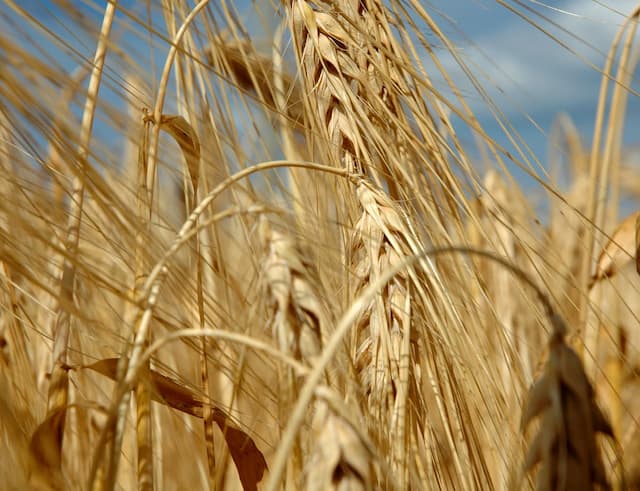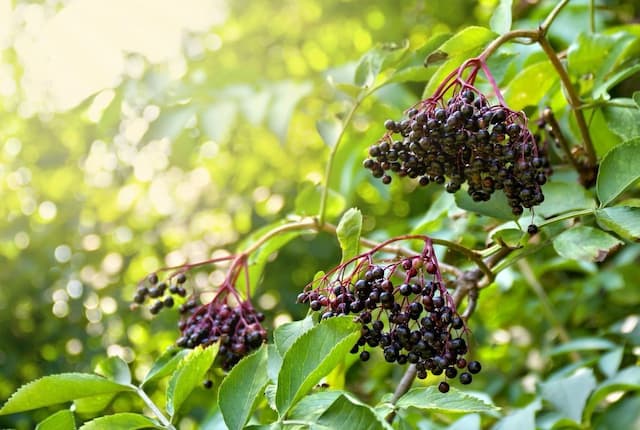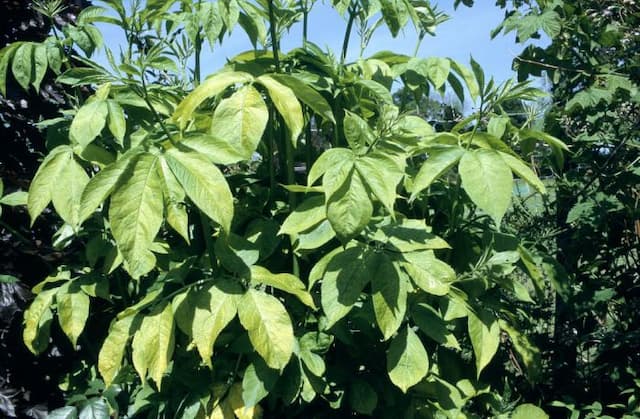Fragrant Snowball Viburnum × carlcephalum

ABOUT
The plant known as Fragrant Snowball is a striking decidary shrub recognized for its highly aromatic, large spherical clusters of flowers that appear in spring. The blossoms start out a soft shade of pink and gradually mature to a pristine white, emitting a rich, sweet fragrance that can enliven any garden space. These flower clusters are made up of numerous small individual flowers neatly packed together, creating a captivating visual impact. Aside from the enchanting bloom, the Fragrant Snowball exhibits dark green leaves that provide a lush backdrop for the flowers. The foliage is broadly ovate with a slightly wrinkled texture and finely toothed margins, contributing further to the plant's ornamental appeal. In fall, the leaves undergo a transformation and develop splendid autumn hues, featuring a range of colors from vivid red to a deep purple, adding a new layer of interest to the landscape as the seasons change.
About this plant
 Names
NamesSynonyms
Fragrant Snowball, Carlcephalum Viburnum
Common names
Viburnum × carlcephalum.
 Toxicity
ToxicityTo humans
The plant commonly known as Fragrant Snowball (Viburnum × carlcephalum) is not considered highly toxic to humans. However, some Viburnum species contain mildly toxic substances, and ingestion of plant parts, particularly in large quantities, may lead to gastrointestinal upset, such as nausea, vomiting, and diarrhea. While serious poisoning is rare, it's advisable to avoid ingesting parts of this ornamental plant and to keep it out of reach of small children who might be tempted to eat its berries or other parts.
To pets
The plant commonly known as Fragrant Snowball (Viburnum × carlcephalum) is generally considered to have a low level of toxicity to pets. Some species of Viburnum can contain compounds that are mildly toxic when ingested. If pets consume parts of the plant, such as leaves or berries, they may experience mild gastrointestinal symptoms, which include vomiting or diarrhea. It is usually not life-threatening, but monitoring your pet for any signs of distress is recommended, and if symptoms persist, consult a veterinarian.
 Characteristics
CharacteristicsLife cycle
Perennials
Foliage type
Deciduous
Color of leaves
Green
Flower color
White
Height
6-10 feet (1.8-3 meters)
Spread
6-10 feet (1.8-3 meters)
Plant type
Shrub
Hardiness zones
5
Native area
Cultivar
Benefits
 General Benefits
General Benefits- Ornamental Value: Viburnum × carlcephalum, commonly known as Fragrant Snowball, has beautifully structured blooms that add aesthetic value to landscapes.
- Wildlife Attraction: Its flowers provide nectar for pollinators like butterflies and bees, while its berries attract birds.
- Fragrance: The plant has a strong sweet fragrance that can perfume a garden, especially in the spring.
- Year-round Interest: It provides visual interest throughout the seasons with spring flowers, summer foliage, fall color, and sometimes red berries in winter.
- Low Maintenance: Once established, it requires minimal care, making it suitable for gardeners of all skill levels.
- Versatility: It can be used in a variety of landscape settings, including as a specimen plant, in mixed borders, or as part of hedging and screens.
- Hardiness: The Fragrant Snowball is hardy in a wide range of climates, making it a robust choice for many gardens.
- Tolerance to Conditions: It can tolerate a range of soil types and is moderately drought-resistant once established.
 Medical Properties
Medical PropertiesThis plant is not used for medical purposes.
 Air-purifying Qualities
Air-purifying QualitiesThis plant is not specifically known for air purifying qualities.
 Other Uses
Other Uses- Privacy screening: Fragrant snowball, due to its dense foliage, can be planted in groups to create a natural privacy screen for a garden.
- Windbreaks: The shrub can be used in a row to form windbreaks which can help protect smaller plants from strong winds.
- Noise reduction: Fragrant snowball's thick growth can also help absorb sound, making it useful for planting along roads or in urban areas where noise reduction is desired.
- Habitat for wildlife: The dense branches and foliage provide shelter and nesting sites for birds and other wildlife.
- Erosion control: The root system of Viburnum × carlcephalum helps stabilize soil on slopes and banks, preventing erosion.
- Topiary and hedging: This plant can be trimmed and shaped into formal hedges or topiary forms for landscape design.
- Sensory gardens: The strong fragrance and tactile leaves make it suitable for inclusion in gardens designed for sensory experiences.
- Seasonal interest: The plant offers seasonal interest with its attractive white flowers in spring and red to black berries in autumn.
- Floral arrangements: The branches of fragrant snowball with blooms can be cut and used to create fragrant, decorative indoor floral arrangements.
- Photography backdrop: The attractive blooms and foliage serve as a picturesque backdrop for garden photography or outdoor events.
Interesting Facts
 Feng Shui
Feng ShuiThe Fragrant Snowball is not used in Feng Shui practice.
 Zodiac Sign Compitability
Zodiac Sign CompitabilityThe Fragrant Snowball is not used in astrology practice.
 Plant Symbolism
Plant Symbolism- Renewal: Viburnum × carlcephalum, commonly known as the Fragrant Snowball, often symbolizes the idea of renewal or rebirth due to its vigorous growth and the way it bursts into bloom at the end of winter, heralding the arrival of spring.
- Beauty: The plant's attractive flowers and overall form represent beauty and the aesthetic pleasure that nature can provide.
- Protection: With its dense foliage, the Fragrant Snowball is also thought to symbolize protection and shelter, offering a safe haven for birds and other wildlife.
 Water
WaterThe Fragrant Snowball Viburnum should be watered deeply once a week, allowing the soil to dry slightly between waterings. During the growing season, this typically equates to about 1 to 1.5 gallons of water per week for a young plant, depending on the weather conditions. Mature shrubs may require more water, but always check the soil moisture level to avoid overwatering. In hot or windy conditions, watering frequency may need to increase to prevent stress. During the winter months, reduce watering as the plant's water requirements decrease.
 Light
LightThe Fragrant Snowball Viburnum thrives in full sun to partial shade. Ideally, it should receive at least 4 to 6 hours of direct sunlight daily, with some dappled afternoon shade in hot climates. An eastern exposure that gets morning sunlight but is shielded from the intense afternoon sun is a suitable spot for this plant.
 Temperature
TemperatureThe Fragrant Snowball Viburnum can withstand a range of temperatures and is hardy in USDA zones 4 through 8. It can survive minimum temperatures as low as -20°F to -30°F during dormancy. However, the ideal temperature for active growth is between 60°F and 75°F. Extended temperatures beyond 85°F may stress the plant, so provide adequate water and shade if necessary.
 Pruning
PruningPruning the Fragrant Snowball Viburnum is essential to maintain its shape and encourage vigorous growth. Prune immediately after flowering in late spring to early summer, as the plant blooms on old wood. Thin out old and dead branches to increase light penetration and air circulation. Shape the shrub as desired, removing no more than a third of the growth to avoid stressing the plant.
 Cleaning
CleaningAs needed
 Soil
SoilFragrant Snowball Viburnum prefers well-draining, moderately fertile soil with a pH range of 5.6 to 6.6. An ideal soil mix can be prepared by mixing equal parts of garden soil, peat moss, and perlite to ensure good drainage and aeration. Adding organic matter such as compost will improve soil fertility and structure, promoting healthy growth.
 Repotting
RepottingFragrant Snowball Viburnum, being a large shrub, is not typically grown in containers and therefore does not require frequent repotting. If it is grown in a pot, repotting should be done every 3-5 years or when it becomes root-bound, to give the roots new space to grow.
 Humidity & Misting
Humidity & MistingFragrant Snowball Viburnum thrives in average outdoor humidity levels. It does not require any special humidity adjustments when grown in its natural environment. The plant is quite adaptable and does not demand high humidity to prosper.
 Suitable locations
Suitable locationsIndoor
Ensure bright indirect light, not suited for deep shade.
Outdoor
Plant in moist, well-drained soil; full sun to part shade.
Hardiness zone
5-8 USDA
 Life cycle
Life cycleViburnum × carlcephalum, commonly known as fragrant snowball, begins its life cycle as a seed, which germinates in moist, well-drained soil, typically in spring. The seedling emerges and establishes a root system, growing into a young plant with foliage characteristic of viburnums. As the plant matures, it develops a woody structure and begins to form flower buds in late winter to early spring. The fragrant snowball blooms in spring, producing clusters of white, fragrant flowers that attract pollinators. After pollination, the flowers develop into small, red-to-black fruit by late summer, which are often consumed by birds and other wildlife, aiding in seed dispersal. The plant continues to grow and can reach up to 6-10 feet in height, going through cycles of blooming and fruiting for many years while also undergoing seasonal changes, such as leaf drop in autumn if located in a temperate climate.
 Propogation
PropogationPropogation time
Late winter to early spring
Propogation: The most popular method for propagating Viburnum × carlcephalum, commonly known as Fragrant Snowball, is through softwood cuttings. This is typically done in late spring or early summer when new growth is still tender and green. Gardeners should select healthy, non-flowering shoots and cut a 4 to 6 inch (about 10 to 15 cm) length, making the cut just below a node. Leaves on the lower half should be removed and the cut end dipped in a rooting hormone to encourage root development. After preparation, the cuttings should be placed in a well-draining potting mix, ensuring at least one node where leaves were removed is below the surface to facilitate root growth. The soil should be kept moist but not waterlogged, and the cuttings should be placed in a bright area with indirect sunlight until roots have developed, which can be checked after a few weeks by gently tugging on the cutting to feel for resistance.



![Elder [Black Tower]](/_next/image?url=https%3A%2F%2Fplants-admin.emdemapps.com%2Fimages%2Fplants%2F%2Fimages%2F604b5cad99578.png&w=640&q=75)





